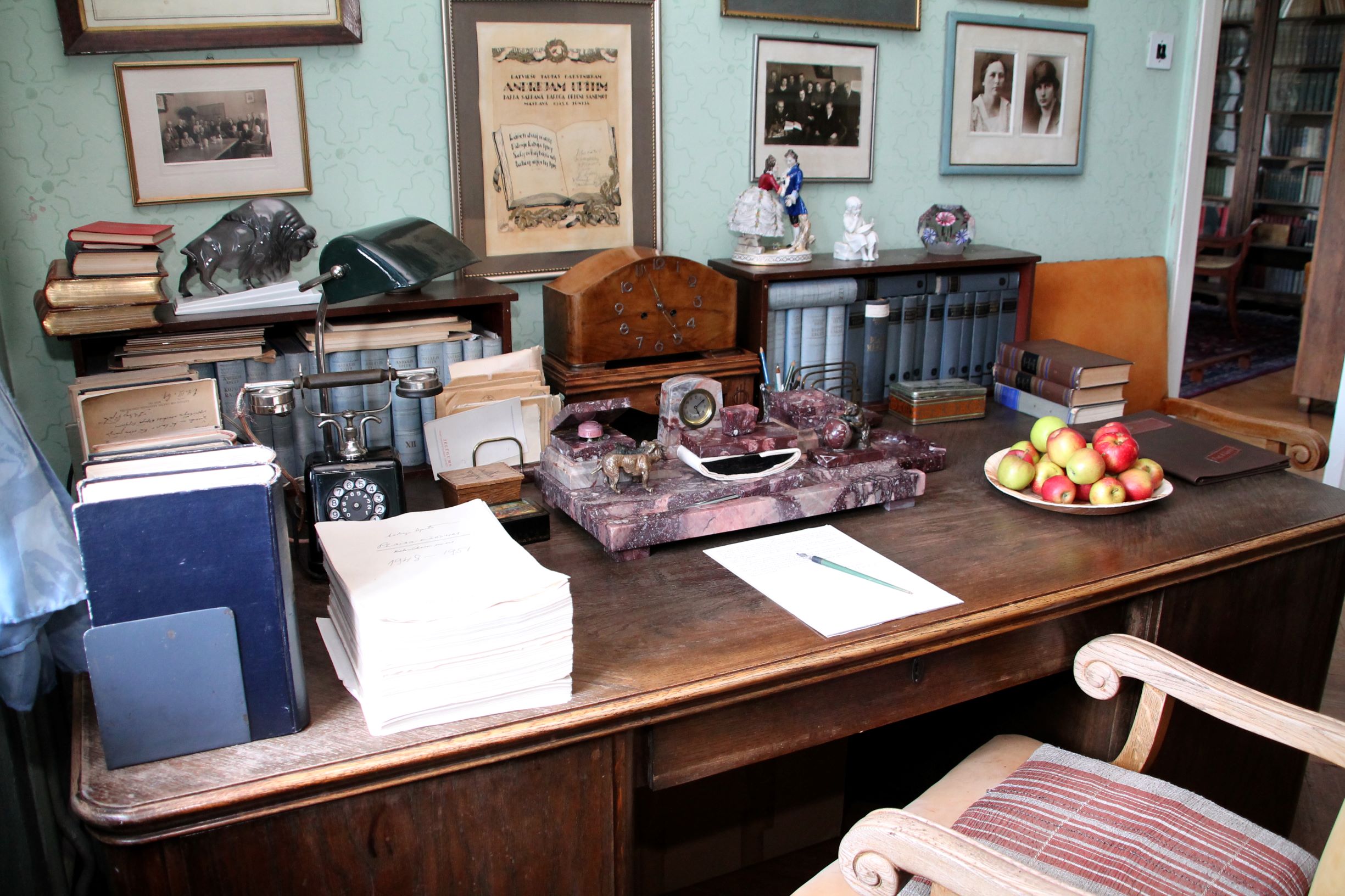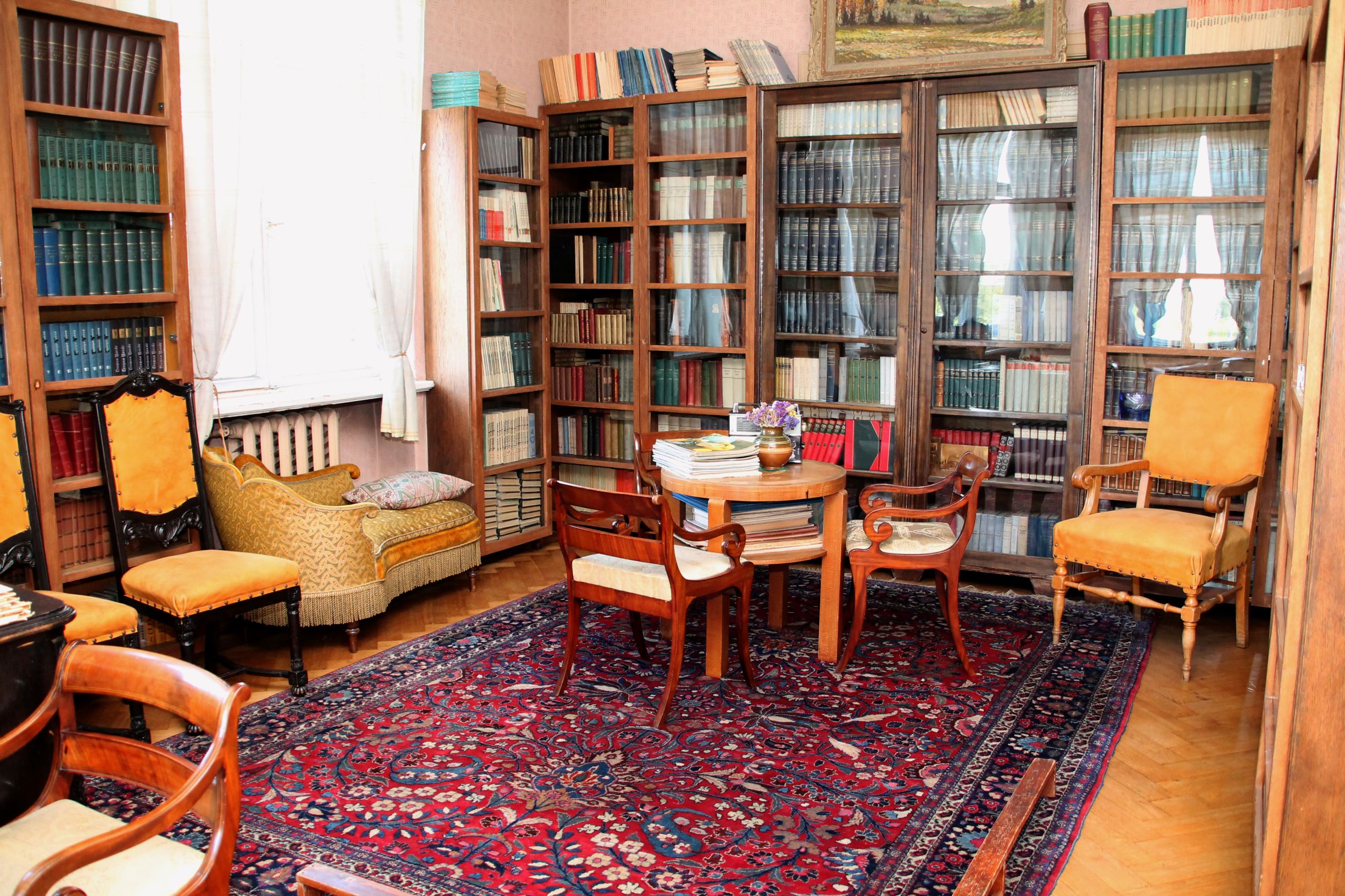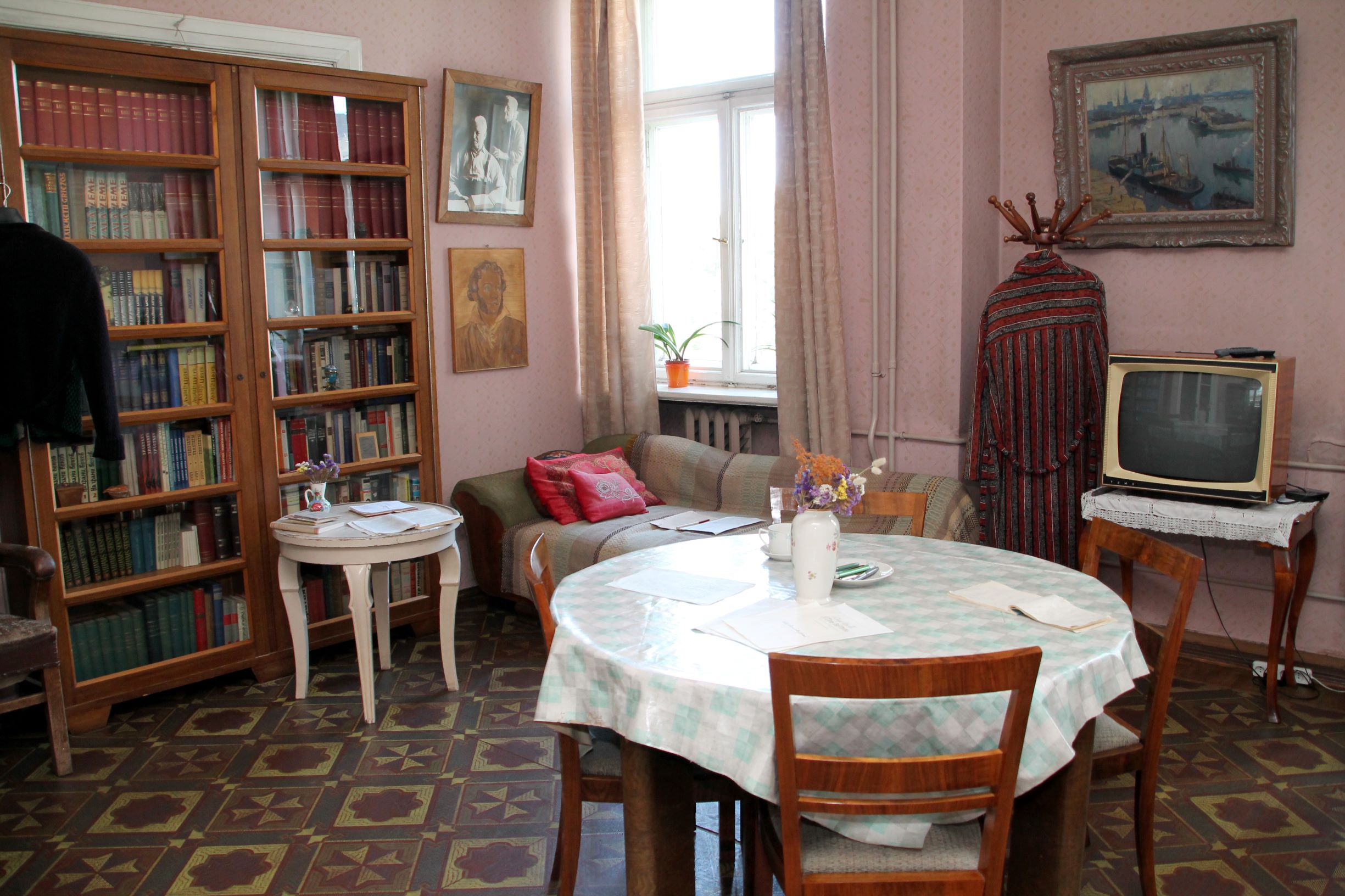The flat of Andrejs Upīts in Rīga is one of the few museums in Latvia which has preserved the reality of recent history and the paradoxes of Socialist ideology.
The building was built in 1911 after a design by the architect Ernests Pole. The building housed a bank and had flats on the upper floors. The distinguished Latvian conductor Mariss Jansons spent his childhood in the 4th flat of the building (1945˗1949), while writer Andrejs Upīts and his family moved into the flat in January 1951. This was the last residence for the writer, and his long, productive and controversial life came to an end there in the autumn of 1970.
The museum offers three commemorative rooms ˗ a dining room, living room and office. The personality of Andrejs Upīts is seen in the design of the rooms, household objects, photographs and particularly the books that are in his library. Among thousands of books in an environment that was based on the author’s work style, family traditions and the era in which he lived. This offers a change to take an in-depth look at his prose and his debatable work as a critic and a politician.
The museum regularly organises discussions and meetings with translators, writers and actors to talk about creative individuals during various phases of history, including the period of the Soviet occupation. These events never avoid problematic or controversial issues.






